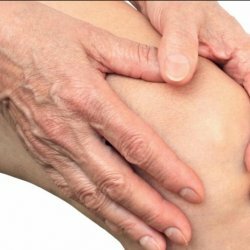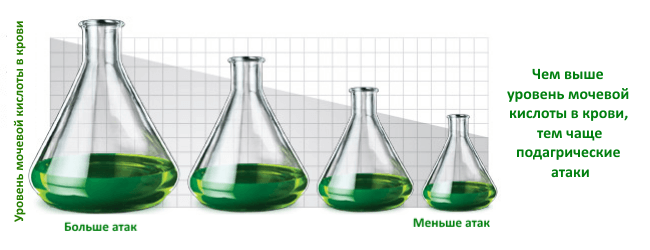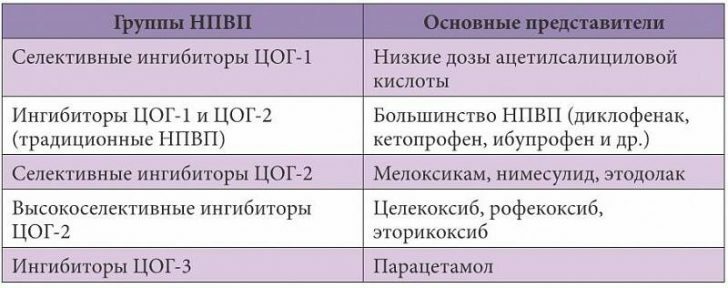Rheumatism: causes of the onset of the disease, symptoms, diagnosis and treatment
 Acute attack of rheumatism, as a rule, takes a person by surprise. The disease itself develops slowly and its symptoms are almost invisible. Rheumatism is a disease that is triggered by a streptococcal bacterium. When the disease worsens, connective tissues become inflamed, which leads to acute pain.
Acute attack of rheumatism, as a rule, takes a person by surprise. The disease itself develops slowly and its symptoms are almost invisible. Rheumatism is a disease that is triggered by a streptococcal bacterium. When the disease worsens, connective tissues become inflamed, which leads to acute pain.
Reasons for the development of rheumatism
Rheumatism develops when a beta-hemolytic group A streptococcal infection enters the human body. This type of infection provokes the development of tonsillitis, pharyngitis and tonsillitis. If you do not start treatment of these diseases in time and do not destroy the infection, then serious complications, including the development of rheumatoid arthritis, are possible. As statistics show, about 3% of people who have experienced this infection fall ill with rheumatism.
Children, adolescents and girls are at risk. Also, the disease is dangerous for those who have had cases of damage to rheumatoid arthritis in the family. Most often, people suffering from rheumatic fever who have suffered an acute form of streptococcal infection and those who are often sick with infectious diseases of the nasopharynx.
Many doctors consider rheumatism a paradoxical disease. The thing is that as soon as a streptococcal infection enters our body, the immune system immediately reacts to this and begins to produce specific antibodies. These antibodies determine the infection by its specific characteristics and structure and destroy it. However, the main danger lies in the fact that the connective tissue and myocardium have the same structure as the infection. Therefore, antibodies, without parsing, also destroy them. Because of this, joints, heart and blood vessels suffer. Various inflammatory processes deform the joints and provoke the development of vices.
Symptoms of rheumatism
The first signs of rheumatism appear even when the disease that provoked it has long since passed. The main symptom that should alert a person is a general malaise, accompanied by fever and acute pains in the knees and elbows. However, these signs do not always start to bother a person. After all, sometimes the temperature stays within the norm, the general weakness is written off by the usual fatigue, and the pain in the joints changes in the weather. Therefore, a person can easily miss the initial stage of development of rheumatism and catch on only when the disease starts to progress dramatically.
Most rheumatism affects the elbow and knee joints, and it can also affect wrists and feet. The main feature of this disease is that it manifests itself and sharpens sharply. Also, the symptoms abruptly disappear if rheumatism is not treated. However, this is not one of those diseases that can pass by itself. It must be treated.
The danger of rheumatism is that it strongly affects the heart. With the progression of the disease, the heart rate changes( slowing and accelerating the pulse), dyspnea and pain in the heart area occur, a person suffers from excessive sweating and feels a constant weakness. At occurrence of such signs it is necessary to address immediately to the cardiologist and to pass or take place inspection as, most likely, development of a rheumatic heart disease( an inflammation of heart) has begun. Revmokardit, if left untreated, will help to provoke the development of heart disease.
Rheumatism is dangerous not only for the heart, but also for the nervous system. The fact is that without treatment, the disease begins to progress and causes an involuntary contraction of the muscles of the limbs, face and neck. In later stages, a man has to grimace, his movements become fanciful, the handwriting is distorted and speech becomes indistinct. Such changes are called "small chorea".About 17% of people who suffer from rheumatic fever, are familiar with these symptoms. Unfortunately, a lot of teenage girls also face them. This gives the teenager not only psychological discomfort, but also makes them feel insecure in society.
At the first signs of the disease, you should immediately consult a doctor, since the risk of recurrence of exacerbation is extremely high. And if rheumatism is not treated, then the seizures will recur. Relapse can occur as a month, and a couple of years.
Diagnosis of the disease
If you have found the manifestation of the first symptoms of the disease, it is worth immediately contacting a rheumatologist. It can also be visited if you have recently suffered a serious upper respiratory tract infection caused by streptococcal infection. The doctor will prescribe you to do an immunologic blood test. With rheumatism, blood will contain specific substances that indicate inflammatory processes. They appear in the body 6-7 days after the onset of the disease.
The doctor will send you to the cardiologist to examine the heart. EKG and echocardiography are mandatory. An x-ray examination is also appointed, thanks to which it is possible to learn about the condition of the joints. If the doctor needs additional results, he can refer the patient to a biopsy of the joints, a diagnostic puncture of the articular fluid and arthroscopy.
Treatment of rheumatism
Rheumatism is a disease that is best treated immediately after the onset of its first symptoms. The doctor appoints for treatment complex therapy, which is aimed at reducing the level of streptococcal activity and inflammation. Prevention of heart disease is also prescribed.
The patient may be prescribed inpatient treatment, which involves medication, a set of therapeutic physical exercises, a balanced dietary intake. Such a program is assigned individually for each person. For two weeks, the patient needs to undergo penicillin treatment. Non-steroidal anti-inflammatory drugs are also prescribed: celecoxib, Nimesulide and Meloxicam. On average, the treatment lasts from one to two months, until the active phase of the disease is fully completed.
If in rheumatism a person has chronic tonsillitis, the course of treatment with penicillin is prolonged. However, there are cases when doctors add one more antibiotic in addition to penicillin( Cefuroxime, Amoxicillin, Azithromycin and Clarithromycin).
If the inflammation is severe and the doctors are concerned about the condition of the patient, they prescribe hormone therapy. For example, the initial dose of Prednisolone is used for two weeks until the desired effect is manifested. After that, the amount of the drug administered is reduced every 6-7 days.
At the initial stage of the development of the disease, quinoline preparations( Plakvenil and Delagil) are prescribed. Their patient takes about 1.5 months until there is an improvement.
After the main treatment, the patient must undergo cardiovascular treatment if cardiac complications occur. The main task of the doctor is to restore the functional capacity of the cardiovascular system.
After recovery, the patient should be observed regularly in the clinic to prevent the re-development of rheumatism. For prevention, doctors use bicillin - 5 times a month throughout the year. In addition, twice a year the patient should be examined. If the heart does not suffer from the disease, then the prevention is carried out for five years after the last attack. In the autumn and spring, the patient is additionally treated with anti-inflammatory non-steroid drugs.



